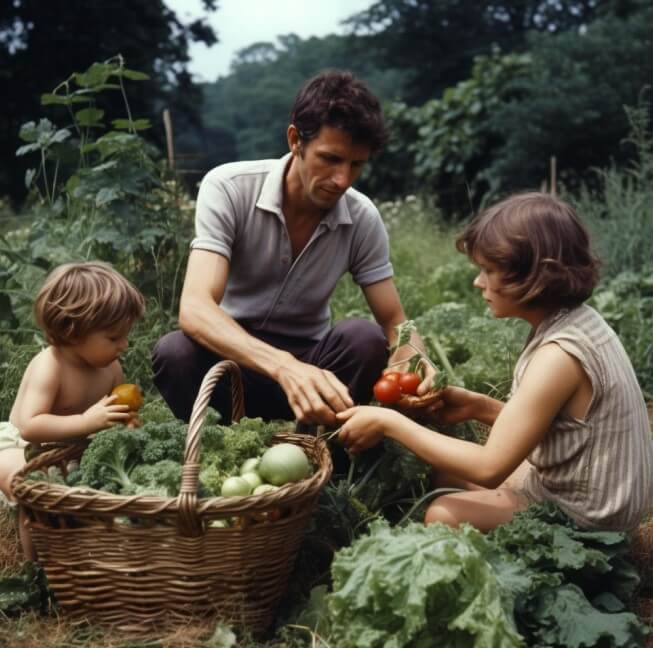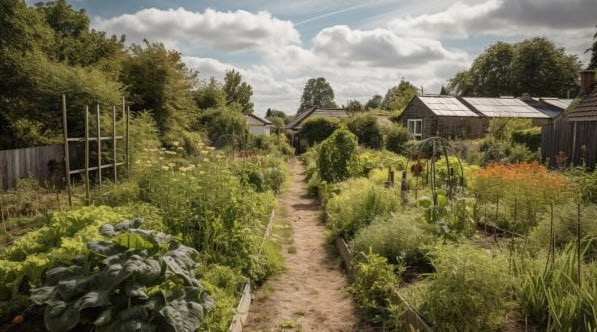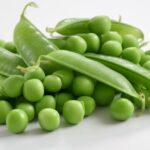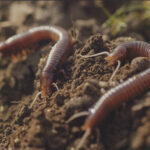Would you prefer to listen to a short podcast discussion about this article? Click on the audio below.
Table of Contents
Gardening, and growing your own food is a great way to save money and eat healthy. Allotments are now diverse places with all ages, genders and nationalities following a variety of gardening philosophies. Here we take a look at how some of the different growing methods approach steps in the cultivation calendar.
Organic Principles of Gardening
Organic gardening is a method of growing plants without using synthetic chemicals. Here are some tips for organic gardening:
Soil preparation
- Keep soil covered with thick mulches of organic materials like composted leaves, homemade compost or green manures.
- Crop rotation is important to prevent the build-up of pests and diseases.
Choosing seeds
- Organic seeds are harvested from plants grown without synthetic chemical fertilizers, pesticides, and fungicides.
Growing on and feeding
- Only use organic fertilisers such as chicken pellets, rock dust, seaweed meal etc where a soil deficiency has been recognised.
- Feed plants with liquid seaweed extract, compost tea or mulch with homegrown nettle or comfrey leaves.
- Grow produce that is suitable for your soil and region.
- Water the soil not over the plants.
- Grow varieties with resistance to disease.
- Sow and plant at times that avoid pests e.g. sow carrots in June to avoid carrot fly.
Crop Protection
- Prevention is better than cure; a biologically diverse plot will have a healthy ecosystem with beneficial insects and natural predators.
- Any pesticide use will break the food chain and may be harmful to other life forms so should be avoided and use biological controls sparingly.
- Use barrier methods and physical methods to remove pests.
Permaculture Principles
Permaculture is a method of gardening that focuses on sustainability and working with nature. Here are some tips for permaculture gardening:
Soil preparation
- No-dig technique is popular with permaculturists.
- Only uses materials produced within the plot system eg green manure, garden compost to mulch.
Sowing and choosing seeds
- Save your own seeds from the plot
- Buy Open Pollinated seeds
Growing on and feeding
- Grow different crops together in the same bed e.g. the North American “3 sisters system” where sweetcorn squash and climbing green beans are grown together.
- Feed with compost tea, much with comfrey or nettle grown on the plot.
- Use companion planting to influence the health and growth of other plants.
- Use swales (a gully) to harvest water – channelling rainwater to where it is needed at the plant’s roots.
Crop Protection
- Using nature to achieve a balance.
- Avoid the use of chemicals.
Bio-dynamics
Bio-dynamics is a method of gardening that focuses on the lunar calendar and cosmic forces. Here are some tips for bio-dynamic gardening:
Soil preparation
- Best done in the last quarter phase of the moon
Sowing and choosing seeds
- At the new moon plant above-ground annual crops that produce their seeds outside the fruit.
- At the second quarter of the moon plant annuals that produce above ground, but their seeds form inside the fruit.
- The full moon is a favourable time for planting root crops.
Growing on and feeding
- In the fourth quarter of the moon, there is decreased gravitational pull and moonlight, and it is considered a resting period.
- This is also the best time to weed and mulch, make compost and manure teas, harvest, transplant and prune.
Crop Protection
- Bio-Dynamic followers believe that by following the Lunar Planting Calendar gardeners will utilise the cosmic forces to improve crop growth and development which increases the power of plants to resist any pest and disease incidences.

Traditional
Traditional gardening is a method of gardening that has been used for centuries. Here are some tips for traditional gardening:
Soil preparation
- Many people enjoy the ritual of digging over their plots and enjoy the exercise of Double Digging.
- Critics prefer a technique of digging just one spade’s depth and turning the soil as you go.
Sowing seeds
- Waiting until the soil was warm enough for the direct sowing of seeds was the traditional method.
Growing on and feeding
- Traditional allotment gardeners follow many of the same principles as organic gardeners, rotation is vital to preserving healthy soil and mulching with manure and other organic materials have been practised for centuries.
- Some do use inorganic products such as Grow-more to promote growth.
Crop Protection
- Non-organic gardeners are more likely to use chemical herbicides and pesticides along with barrier methods.
Conclusion
Having your own allotment is the best way to provide affordable, fresh, healthy fruit and vegetables for you and your family. The important thing is to make a responsible and enlightened decision based on all of the up-to-date information that is available – especially with respect to pest and disease control.
If you need any further information or assistance with this article, don’t hesitate to Contact Us





















